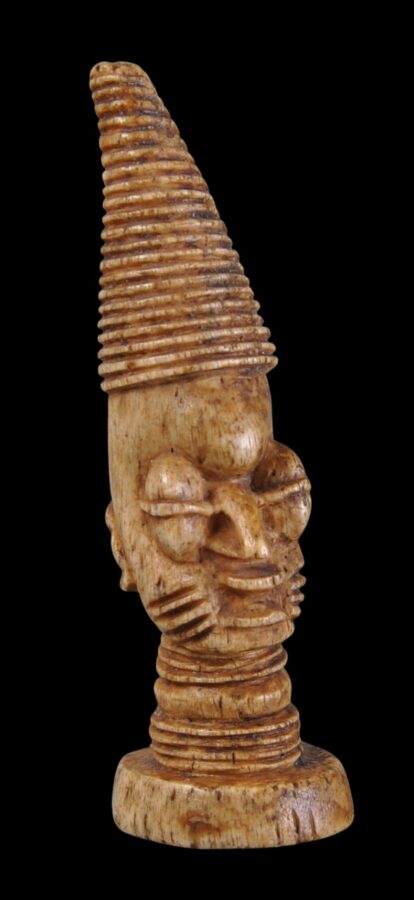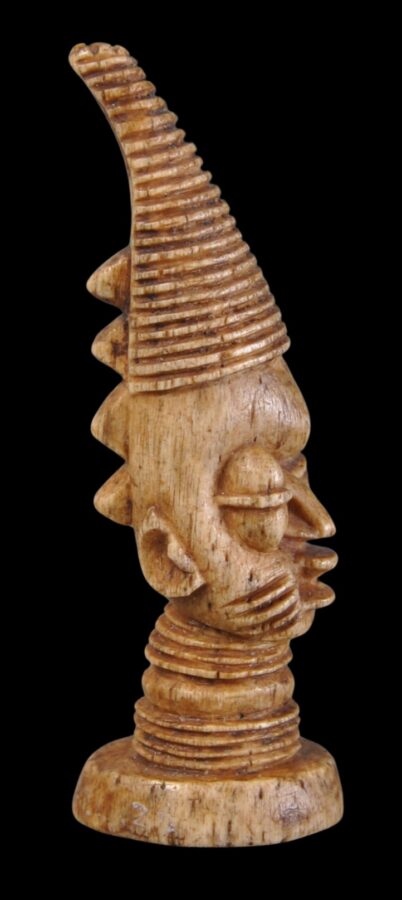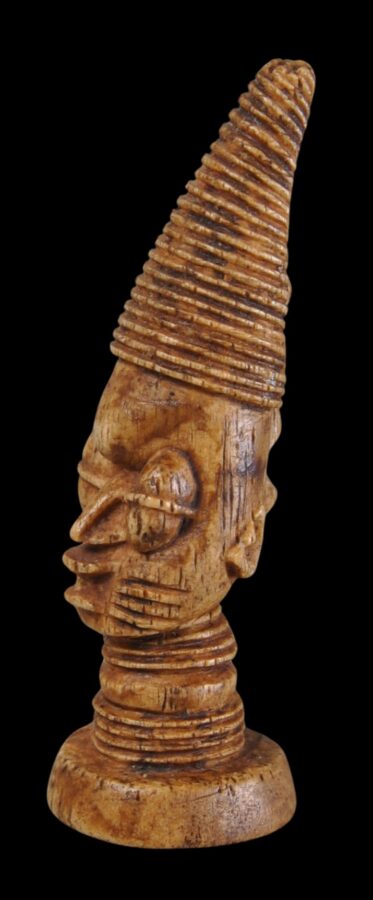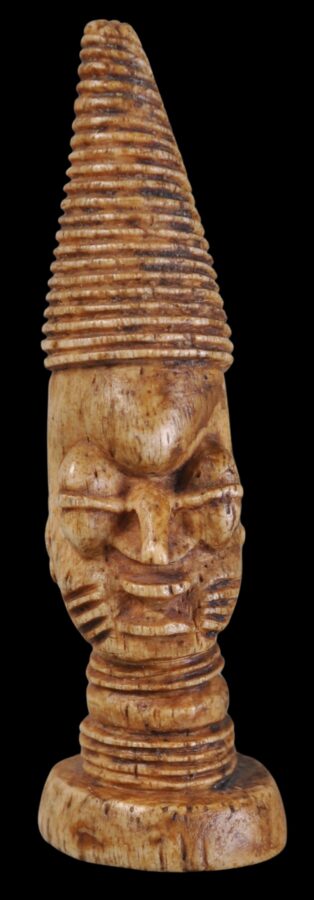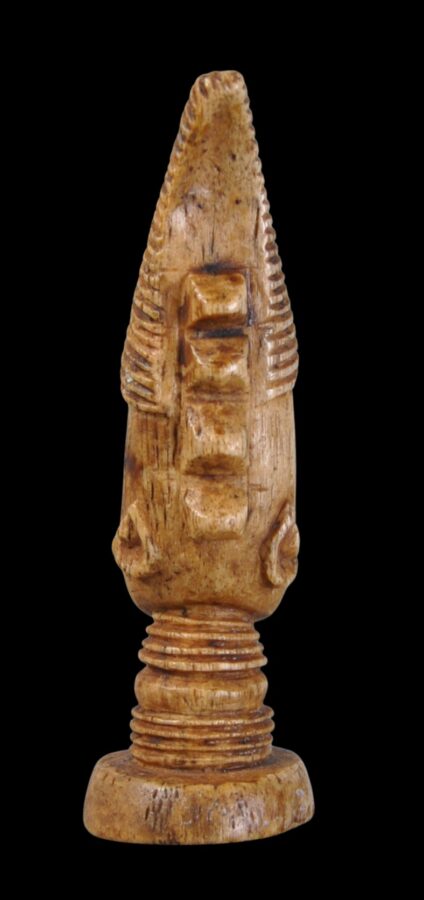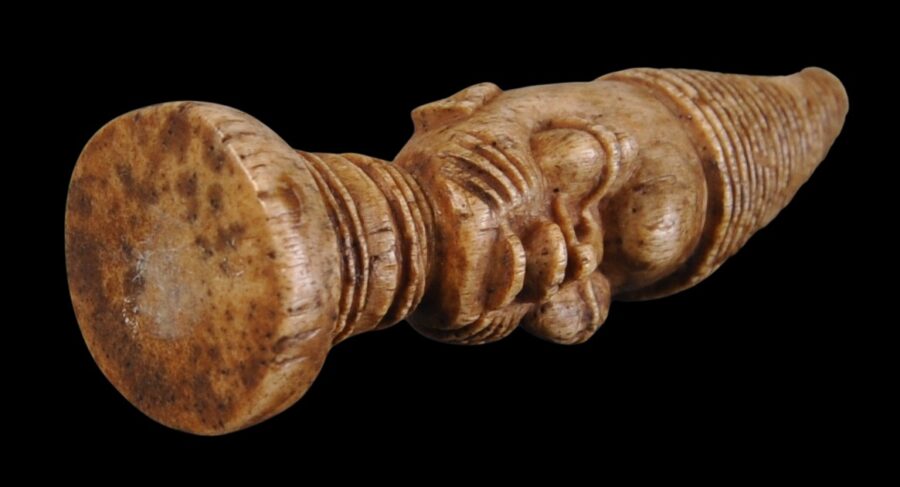This finely carved bone image from the Yoruba people of Nigeria, was used in divination rituals. It was placed beside the divination board or tray to represent the deity Eshu during such rituals. It sits on a rounded base, has a long neck, and the head wears a long, pointed, cap that has been well-carved with ridges. The face is decorated with scarification.
The face of this example is particularly characterful. The eyes are bulging and the thin but pronounced lips are wide apart.
Such images of Eshu are rarely encountered. A similar example collected in 1910 is in Stuttgart’s Linden Museum and is illustrated in Fagg et al (1982, p. 40).
Five related images, mostly in tusk, were offered as lots 27 and 28 in Christie’s New York sale ‘African and Tribal Arts’, New York, October 13, 1978. Another formed part of lot 117 in Sotheby’s Paris sale ‘Art Africain et Oceanien’, December 3, 2004.
A related figure is in the British Museum.
Divination trays were used to predict events and to seek advice. Orunmila is the spirit of wisdom and divinity of destiny and prophecy in Yoruba mythology. Ifa divination was a means to transcribe Orunmila’s wisdom. Eshu acts as a medium between the human and spirit realms. Eshu delivers knowledge and guidance in times of trouble, regardless of the other deities a person may worship. During the divination ritual, a priest called a Babalawo (‘the father of ancient wisdom’) would sprinkle pulverised wood or yam flour onto the depressed central area of the divination board and tap rhythmically on it with a tapper (Iroke Ifa) to invoke the presence of Orunmila. A small figure such as the one here would sit near the tray to represent Eshu. But judging by how few examples of these figures seem to have survived (almost none have been published), it seems the presence of such a figure was optional.
A bowl (Agere Ifa) was used to hold sixteen sacred palm nuts (Ikins), which must have at least 3 “eyes”. During the divination process, the Babalawo would group the palm nuts in one hand, and shift as many as possible to another hand at once. The remaining palm nuts, desirably one or two, were counted and marked. As the divination proceeded, the Babalawo would continue to make single or double marks in the wood powder spread on his divination tray until one of the 256 available odus is created. (An odus is a set of accepted traditional binary patterns or codes that have evolved over thousands of years of observation and prediction. They provide guidance on both the everyday and the spiritual.)
The Eshu figure here is rare, in very good condition, and is particularly well carved. It stands unaided.
References
Christie’s New York, ‘African and Tribal Arts’, New York, October 13, 1978.
Fagg, W., J. Pemberton III & B. Holcombe, Yoruba: Sculpture of West Africa, Collins, 1982.
Sotheby’s Paris, ‘Art Africain et Oceanien;, December 3, 2004.


